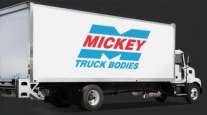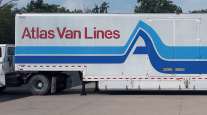Managing Editor, Features and Multimedia
How Consolidation Is Reshaping Trucking’s Technology Sector

[Stay on top of transportation news: Get TTNews in your inbox.]
Consolidation has dramatically reshaped trucking’s technology market over the past decade, with dozens of software and telematics companies joining forces to create larger organizations with expanded capabilities and broader reach.
This realignment has been driven in large part by advances in technology, regulatory changes and venture capital, all of which have fueled an influx of startup firms in the transportation technology sector.
Established vendors, eager to keep pace with emerging technologies and gain a competitive advantage, have been purchasing some of these newer entrants to the industry with the goal of expanding and enhancing their products and services.
In some cases, large companies have set out to make the industry more efficient by piecing together multiple elements of fleet management technology, including vehicle telematics, back-office software, routing and navigation, workflow applications and onboard video.
When these suppliers decide to add a new capability, they have two main options — to develop it internally from scratch, or acquire it by purchasing another company. Given the rapid pace of technology development, the expedient choice often is to buy rather than to build.
“It’s sometimes easier to acquire technology that’s already winning in the marketplace and complements what you’re doing and adds to your bevy of tools,” said James Langley, senior vice president at Trimble Transportation.

Video-based safety systems are a growing segment of the trucking technology sector. (SmartDrive Systems)
Trimble is a prime example of the consolidation trend. The global provider of tracking and navigation technology became a major player in the North American trucking market with its acquisition of PeopleNet in 2011. From there, Trimble went on to purchase several other transportation technology firms such as TMW Systems, ALK Technologies, 10-4 Systems and, most recently, Kuebix in early 2020.
Through those acquisitions, Trimble’s technology offerings now include real-time sensor data from the vehicle, fleet management software in the back office and geospatial information for routing, mapping and navigation.
Connecting those pieces can help the transportation industry address pain points such as driver detention time and meet shippers’ rising expectations for on-time, in-full delivery, Langley said.
“If you’re trying to work towards a more connected supply chain to make it more efficient, you’re connecting the driver to the back office to the shipper,” Langley said. “And fundamentally, that’s the way we view you can solve these workflow challenges and make the industry more efficient as a whole.”

Langley
Trucking telematics provider Omnitracs also has been expanding its capabilities through acquisition since its spinoff from wireless technology giant Qualcomm in 2013. As a stand-alone company, Omnitracs has gone on to acquire Roadnet Technologies, XRS Corp. and several other technology firms.
The company closed another major deal in October when it purchased video-based safety provider SmartDrive Systems.
That acquisition greatly extended Omnitracs’ presence in the video telematics space, which Omnitracs CEO Ray Greer described as “the next major stair step in innovation” for safety in the trucking industry.
“The primary interest for me in acquiring SmartDrive is the recognition that behavioral event processing is in its early infancy of adoption in the industry,” Greer said. “It’s becoming a standard for how to drive safe practices in the industry, specifically the intention of reducing the frequency of accidents as well as the severity of accidents.”
The company also has begun cross-selling services between Omnitracs’ and SmartDrive’s customer bases, which had about a 20% overlap prior to the acquisition, he added.
In the short term, Omnitracs will be taking a “temporary pause” before considering further acquisitions as it focuses on integrating its recent acquisitions into its business, Greer said.

Greer
Industry analyst Bart De Muynck, a research vice president at Gartner Inc., noted that the fleet telematics sector in particular has seen a significant surge in mergers and acquisitions in recent years.
A prominent example is Verizon Connect, which expanded its business through its acquisitions of Telogis and Fleetmatics in 2016.
Telematics vendors also are forming partnerships with vehicle manufacturers to integrate the technology at the factory level.
The federal electronic logging device mandate, which requires most longhaul motor carriers to record drivers’ hours of service with ELDs instead of paper logbooks, created more market demand for onboard technology, which in turn attracted a new wave of startup firms.
More Q1 iTECH

In some cases, established telematics vendors have completed acquisitions to expand their reach to more segments of the trucking industry, or to add more capabilities as they face competition from newer entrants such as Samsara and KeepTruckin, De Muynck said.
Descartes, a global provider of logistics and supply chain software, is another example of consolidation trend in the transportation technology sector. The company said it has completed more than 40 acquisitions over the past 15 years, including freight visibility firm MacroPoint in 2017.
“We’re driven to help the industry by bringing together the processes, network and data that is needed to completely automate the movement of shipments,” Descartes CEO Edward Ryan said.
The company’s acquisition strategy is aimed at expanding its technological capabilities and its team of experts “at the pace the industry needs,” he said.
“Companies focused on building from the ground up often need longer research and development cycles to bring technology to market, vet it and gain market trust not only for the product but for the company as well,” Ryan said. “In an environment with quickly shifting business needs, time is at a premium and, for some transportation organizations, consolidation may afford the opportunity to operationalize technologies faster.”
Although consolidation has reshaped much of the trucking technology market in recent years, some vendors have expanded primarily through organic growth rather than acquisition.
McLeod Software, for instance, has consistently reported business growth while staying out of the acquisition market during the past decade.
The privately held developer of transportation enterprise software, founded in 1985, said it achieved record growth in 2020 despite the challenges posed by the COVID-19 pandemic.
Technology Convergence
As technology adoption in the trucking industry has increased, so too has the number of disparate systems and redundant hardware in modern truck cabs.
In the back office, meanwhile, planners and fleet managers are utilizing multiple log-ins and disconnected data streams.
Moving forward, the transportation industry has an opportunity to address those inefficiencies through technology convergence, one of the goals of Omnitracs’ acquisition of SmartDrive, Greer said.
By unifying the core devices, data plans and applications in the cab, technology vendors can lower the total cost of ownership for fleet customers, Greer said.
The same opportunity exists in the back office, where carriers are accessing multiple host systems with different log-ins, he added.
Greer also highlighted an opportunity to bring together the data captured by telematics, onboard video and workflow applications. Consolidating the data flowing in from those disparate systems can enable greater freight visibility and business insights, he said.
“You can begin to mine that to better understand the environment, better understand the conditions to improve the coaching of the driver, maybe even the management of the asset, the freight and the delivery,” Greer said.
Innovation and Integration
Venture capital has played a key role in transforming the trucking technology landscape, not only by fueling the advent of new vendors, but also by helping to drive the industry toward more modern, cloud-based and cost-effective systems, Gartner’s De Muynck said.
“This would not have been possible without venture capital funds,” he said.
Omnitracs’ Greer agreed that these startups are accelerating innovation in the trucking industry, but added that it is difficult for newer companies without an existing presence in this market to scale up new technologies.
That challenge implies that their exits will be through acquisition by larger, more established companies looking to expand their capabilities and footprint, he said.
Trimble’s Langley said most of the technology startups entering the industry are focused on rapid growth rather than long-term profitability.
“They’re building for growth, and they’re building to sell,” he said.
Langley said trucking technology startups are creating some “really compelling solutions,” such as new ways to utilize data and apply artificial intelligence and machine learning, but they also have a tendency to create “point solutions” that are designed to solve a specific problem.
And that creates friction for fleet customers who will want to integrate that point solution with their transportation management systems and telematics platforms and tie it into the workflows for drivers and fleet managers, he said.
Langley said he encountered that challenge in his past role as president of Eagan, Minn.-based truckload carrier Dart Transit Co.
“I’d have people come in and present some really awesome technologies, and my next question was, ‘OK, does that mean I need another sign-on? Does that mean I need another portal? Does that mean I need another reporting tool? Because if that’s the answer, I don’t want it, because my people only have so much time in a day.”

Mergers and acquisitions have reshaped the trucking technology sector over the past decade, but what does this trend mean for the trucking and logistics companies that rely on these technologies? Seth Clevenger speaks with James Langley of Trimble Transportation. Hear a snippet, above, and get the full program by going to RoadSigns.TTNews.com.
Descartes’ Ryan agreed that external investment can accelerate the introduction of new technologies in the logistics market, but also cited the problem with disconnected point solutions.
“The persistent challenge we hear from our transportation customers is that they want more comprehensive solutions and the network to be in place for them,” Ryan said. “We view the recent influx of capital and startups as an opportunity to help us continue our long-term strategy to expand our capabilities through acquisition.”
The ‘Coopetition’ Dynamic
Consolidation over the past decade has created a more complex competitive environment in the trucking technology market.
Technology vendors that are direct competitors in certain segments of the market are at the same time partnering on technology integrations in other areas to support shared customers.
“My view, as the leader of Trimble Transportation, is we have to embrace ‘coopetition’ because we have to support customer choices,” Langley said.
Given the many diverse applications within the trucking industry and the nuances of specialized fleets, different companies will select a variety of technologies that meet their specific needs, he said.

Omnitracs has closed several major acquisitions since its split from Qualcomm in 2013. (Omnitracs)
“If we want people to buy more of our solutions, our Trimble-branded solutions, it has to be one plus one equals three. They’ve got to be better together,” Langley said. “We’ve got to win on value proposition. We can’t hold a customer back if we don’t have exactly what they need.”
Gartner’s De Muynck expects this “coopetition” dynamic to continue in the years ahead.
Despite the more comprehensive capabilities assembled by large vendors, De Muynck said they won’t be able to push a single platform unless it provides far superior capabilities and user experiences, or a much lower price point.
“On the shipper side, we have already seen a much larger desire for a single platform and supplier. We have not yet seen the same appetite on the carrier side,” De Muynck said. “The economic conditions of the carriers mean they have to continue to use their software for a lot longer, whereas shippers have no issue changing out a TMS, for example, after three years.”
Looking ahead, transportation technology executives and industry analysts expect consolidation in the trucking technology sector to continue.
Advances in data analytics, machine learning, final-mile delivery, electric and automated vehicles and other fields will drive more investment, more innovation and eventually, more consolidation.
In another 10 years, the trucking technology market likely will look much different than it does today.
Want more news? Listen to today's daily briefing below or go here for more info:




